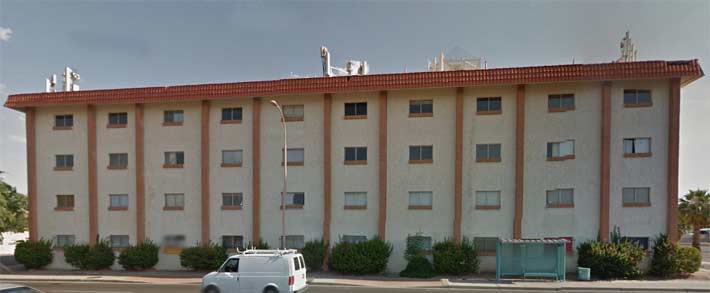
A Phoenix, Ariz. building owner’s complaint resulted in two carriers receiving a total of $85,000 in fines.
Two carriers were cited by the Federal Communications Commission’s Enforcement Bureau for similar violations for failing to comply with the FCC’s radio frequency exposure limits after the owner of a building at 4040 E. McDowell Rd., Phoenix, Ariz. complained to enforcement agents that his building staff have difficulty gaining RF exposure safety assistance from the carriers that use his rooftop.
T-Mobile received a $60,000 Notice of Apparent Liability (NAL) and Wirelessco, a subsidiary of Sprint Corporation, received a $25,000 NAL for insufficient protections to prevent public access to their antennas co-located on the building’s rooftop.
The enforcement bureau issued the NALs for “failing to comply with the requirement of our RF maximum permissible exposure (MPE) limits.”
On Jan. 14, 2015, agents from the FCC’s San Diego, Calif. office noted that several antenna panels were located in the southern section of the building, and the northern section has a penthouse area, which itself is enclosed, but has two outdoor patios, one in the northwest corner of the building and one in the northeast corner of the building’s rooftop.
The penthouse patios and the antenna areas are bisected by an elevated platform on the middle section which is approximately 40 inches higher than the floor in each of the patios and the antenna area. This center section can be easily accessed by anyone on either patio, allowing unrestricted access to the antennas.
The inspectors said that access to the rooftop is gained by taking an elevator or a staircase to the top floor of the building. “Exiting the elevator or stairwell, individuals can access the penthouse, and the two patios atop the Building, or, if they have a key or the combination to a key lockbox, can unlock the door and walk directly onto the antenna area,” according to the NAL.
At the time of the inspection, there were no RF exposure notices or signs mounted near or in the penthouse or patios warning of the hazard in the adjacent areas, although there were two warning signs mounted on the door leading directly to the antenna area.
Using a Narda SRM-3000 narrowband meter and probe, RF emissions from Wirelessco’s two antennas were 184% and 180% of the general population MPE limits during the agents’ first inspection. The following day those readings were 178% and 198%.
The agents observed graffiti on the front of another antenna panel on the rooftop, not associated with Wirelessco, as well as pens and cigarette butts in the antenna area, suggesting that the general public has actually accessed the panels in the past.
T-Mobile’s measurements for their antennas were considerably higher at 246%, 220%, 270% and 178%. On the following day they registered 298%, 268%, 242% and 182% of the general population MPE limits.
The FCC base fine for violations of RF exposure limits is $10,000 for each violation, but the FCC found aggravating circumstances for both carriers and T-Mobile was given a base fine of $30,000 for their three sectors being out of compliance. The FCC added an additional $45,000 because of the carrier’s size, but reduced that amount by $15,000 because T-Mobile had posted some signage and created a barrier to entry, although it was ineffective.
Wirelessco’s $10,000 base forfeiture was increased by $15,000 because it was a subsidiary of Sprint Corporation.
On Sept. 17, 2015 Senators Richard Blumenthal and Anna Eshoo wrote to FCC Chairman Tom Wheeler, letting him know of their concerns about the estimated 250,000 people who work each year in close proximity to cellular antennas an may be exposed to radiofrequency radiation in excess of the FCC’s limits.
The last FCC enforcement action was an April settlement with Verizon Wireless.
Compared to T-Mobile’s $60,000 citation for one site violation last week, Verizon skated with only a $50,000 fine for violating the RFE limits at rooftop antenna sites in the Philadelphia, Pennsylvania, and Hartford, Connecticut metropolitan areas.
















